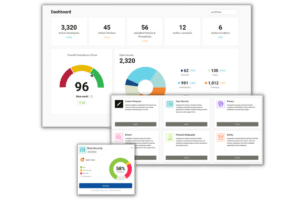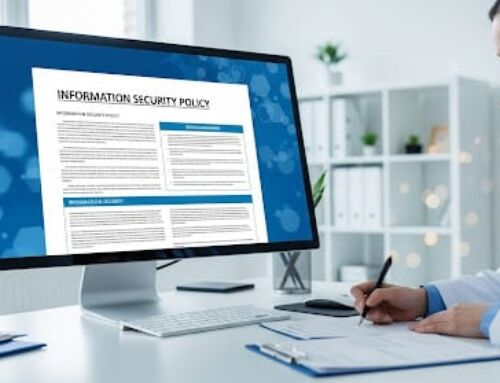
Everywhere around us, there is risk, especially in healthcare, where patient safety, data privacy, and operational integrity are at stake.
A strong cybersecurity risk assessment in healthcare helps organizations not only identify threats but also proactively mitigate them in compliance with industry standards like HIPAA. We must move from reacting to risks to predicting and preventing them through structured risk management practices.
Why Traditional IT Risk Assessments Fail in Healthcare
As a compliance professional, you know that most HIPAA violations happen because organizations don’t properly analyze their risks. Regular IT risk checks often miss healthcare’s unique challenges.
Most frameworks ignore healthcare’s operational realities, such as:
- Third-party vulnerabilities, which are responsible for 62% of breaches
- Medical IoT devices lacking patch capabilities
- Clinical workflow disruptions/patient safety risks
- OIG/HHS audit traps in documentation gaps
The cost of ignoring these realities and failing to act on them is a $1.2M settlement fee average per violation of compliance standards, such as HIPAA, and mandatory corrective action plans consuming 650+ staff hours. Time that could be put to better use by implementing a preventive rather than a corrective approach.
A 5-Pillar Framework for Cybersecurity Assessment in Healthcare
(Aligned with NIST 800-66 Rev. 2, HHS OCR Guidance & Joint Commission Standards)
1. Mapping PHI assets for HIPAA and Cybersecurity Compliance
This involves identifying every touchpoint of Protected Health Information (PHI) across:
- EHR systems (Epic, Cerner)
- Medical devices (IV pumps, imaging)
- Business associates (claims processors, cloud vendors)
- Legacy systems (old PACS, billing databases)
2. Using Threat Intelligence to Improve Healthcare Cybersecurity Compliance

Critical: Integrate H-ISAC feeds and OCR enforcement alerts.
3. Translating Healthcare Cyber Risks into Business and Compliance Metrics
This involves translating technical risks into compliance terms with a real value on the effect of such risks crystallizing.
For example, a stolen unencrypted laptop with five thousand patient records, which could be sold or exploited, can be estimated to cost $2.1M. Hence, anyone reading the report knows that forgetting to encrypt the laptop or keep it safe is the same as risking over two million dollars. This serves to increase vigilance and also give a true sense of what it is we stand to lose by failing to carry out basic procedures.
Compliancy Group’s dashboard helps organizations generate a risk matrix mapped to §164 controls, giving them insight into which risks pose the most threat and allowing them to manage them effectively.
4. How to Address Cybersecurity Gaps in Healthcare IT Systems
To do this, your organization must match each solution to its unique reality:
- For unpatchable devices: Isolate them from your main network.
- For weak passwords: Require two-factor authentication.
- For vendor risks: Check their security *before* signing contracts.
Furthermore, use HIPAA’s free security rule checklist to validate your fixes.
Audit-proof your safeguards with:
- Automated HIPAA Security Rule Testing (45+ requirements)
- Policy Attestation Workflows per §164.308(a)(5)
- Vendor Tiering by PHI Access Level
5. Documenting PHI Risk Management for HIPAA and OCR Audit Readiness
Your organization must provide proof of due diligence through:
- Automated evidence collection for 164.316(b) (evidence of risk detection, treatment, and review)
- Change-tracking for risk treatment decisions
- Audit trail of policy updates
Automation Tools for HIPAA and Cybersecurity Compliance
(Eliminate manual work consuming 70% of compliance budgets)

Healthcare Cybersecurity Implementation: Vendors and Workforce
Third-Party Risk Governance
Vendor risk management plays a big part in compliance. Compliancy Group allows you to:
- Implement Business Associate Agreement tracking
- Conduct annual Business Associate security reviews
Workforce Training Compliance
We prepare your staff to not just be compliant on paper but prepared for information security and cybersecurity incidents by:
- Documenting role-specific training
- Offering robust cybersecurity training with realistic scenarios
- Implementing specialty-specific LMS modules
Why Compliance Leaders Choose Compliancy Group’s Risk Management Platform
Our platform allows you to run a risk assessment against multiple security frameworks simultaneously, including NIST, ISO, CIS, and HIPAA Security Rule. When you sign up with us you get:
- Pre-built risk assessment questionnaires
- Risk scoring capabilities
- Vendor risk assessments
- Business associate agreements
- Policy templates
- Employee cybersecurity training
- Documentation and tracking of your efforts
Next Step: Strengthen Your Cybersecurity Strategy
Are you ready to reduce compliance risk, protect PHI, and ace your next HIPAA audit?
Join hundreds of healthcare compliance teams using Compliancy Group’s healthcare compliance tracking software to automate audits, implement cybersecurity best practices, and accelerate workforce cybersecurity training. Book a Demo of The Guard!









